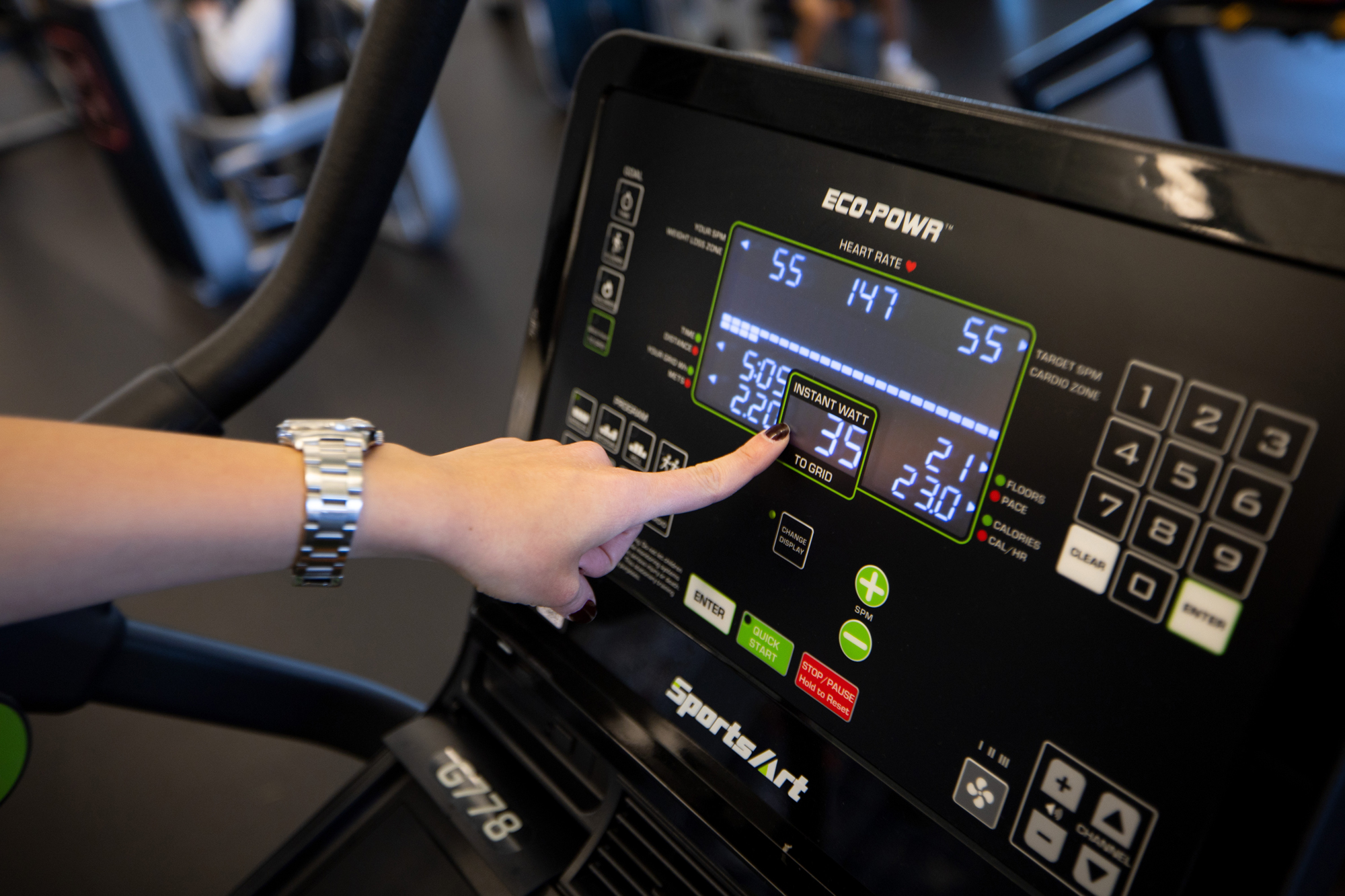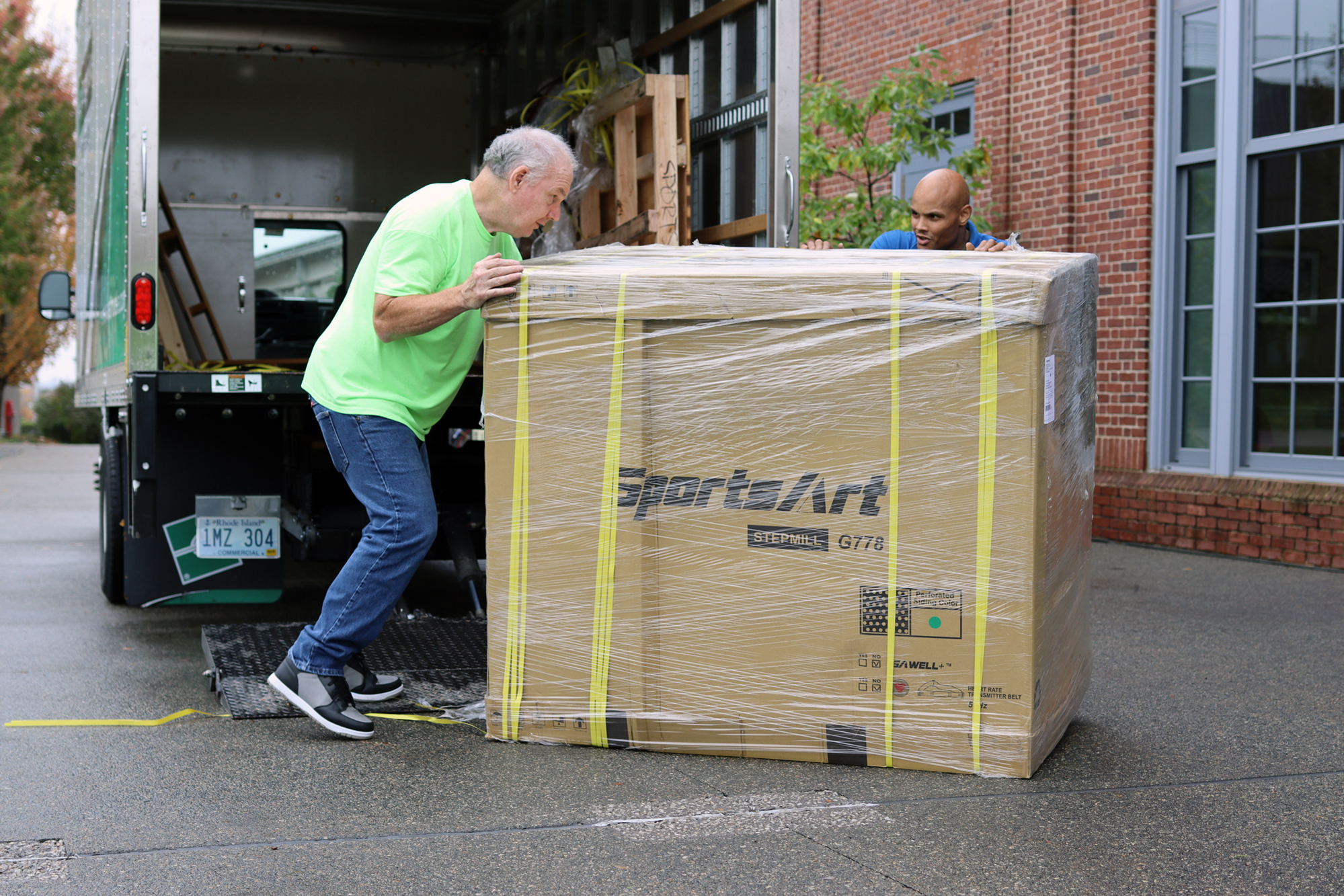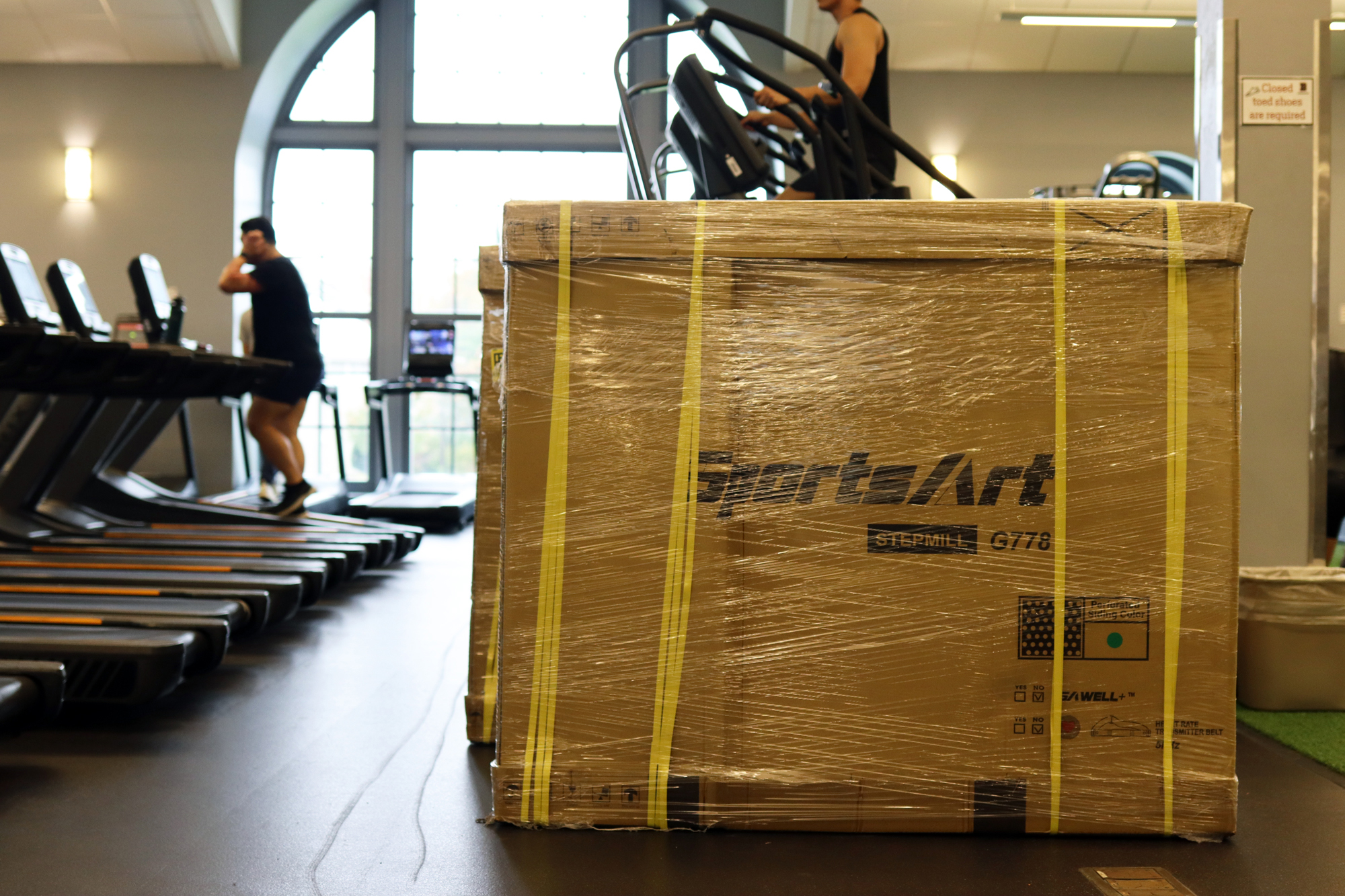PROVIDENCE, R.I. [Brown University] — The next time a visitor hops on a cardio machine at Brown University’s Nelson Fitness Center, they might generate more than sweat.
Strategically placed across the gym’s footprint are six new pieces of equipment — two treadmills, two stair climbers and two rowing machines — that capture human exertion and convert it into usable electricity, offsetting energy consumption.
The idea to install the equipment in the Nelson Fitness Center emanated from a class at Brown in Fall 2022. Student Elina Pipa was enrolled in ENVS0465, a Climate Solutions course taught by Stephen Porder, a professor of ecology, evolution and organismal biology who also serves as associate provost for sustainability at Brown.
Pipa was drawn to the course’s solution- and policy-centered approach, which felt like the perfect opportunity to combine her academics — she is pursuing a double-concentration in economics, and international and public affairs — with her years-long interest in mitigating the impacts of climate change.

“I really try to approach my studies through the lens of sustainability and what my two disciplines can do for fighting climate change,” said Pipa, a junior. “This class didn’t just outline the problem — it inspired action.”
Students began working on the course’s final project before the semester's midpoint given of the level of academic rigor involved in researching, developing and writing a policy brief that suggested a realistic climate solution in a specific context.
As an international student from Greece, Pipa said she felt like she wasn’t perfectly equipped to implement a policy in the United States, but developing policy for her home country presented too many logistical hurdles in a short timeframe. Realizing she would have the most success in focusing on what she knows best, she directed her efforts hyper-locally: Brown’s campus.
Turning ideas into action
Before committing to the idea for the fitness equipment, Pipa put in hours of work to ensure it was feasible. Discovering a company that commercially creates the equipment she had in mind was a huge win, as was learning that leasing a handful of machines was economically viable.
When she floated the idea to Porder, he was enthusiastic.
“Elina’s project was innovative, practical and will reduce carbon emissions and increase awareness,” Porder said. “That’s right in the sweet spot.”

